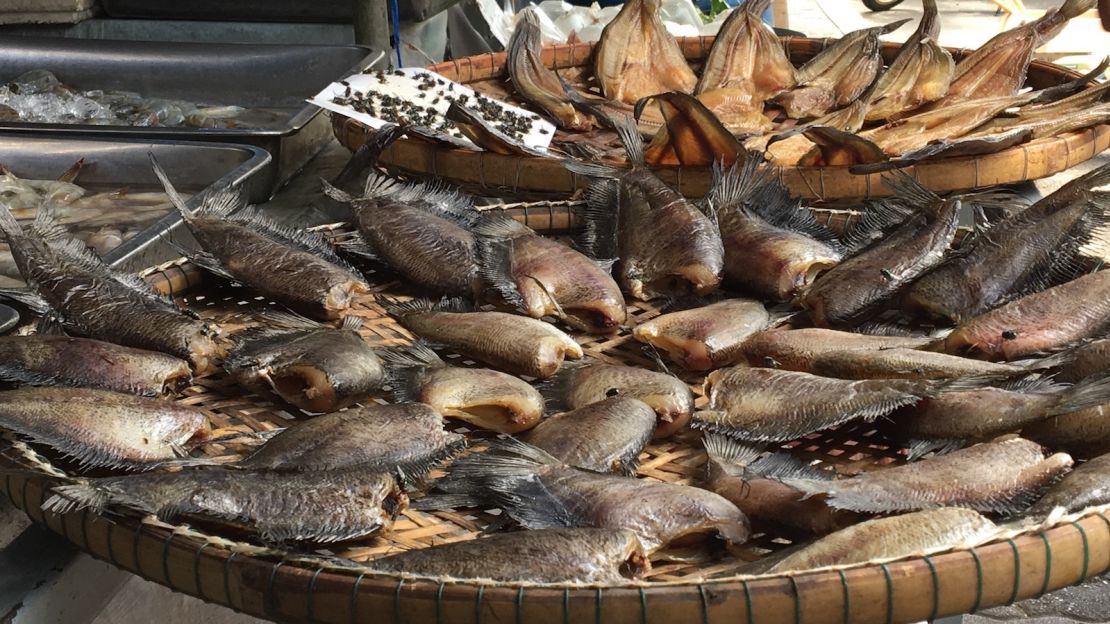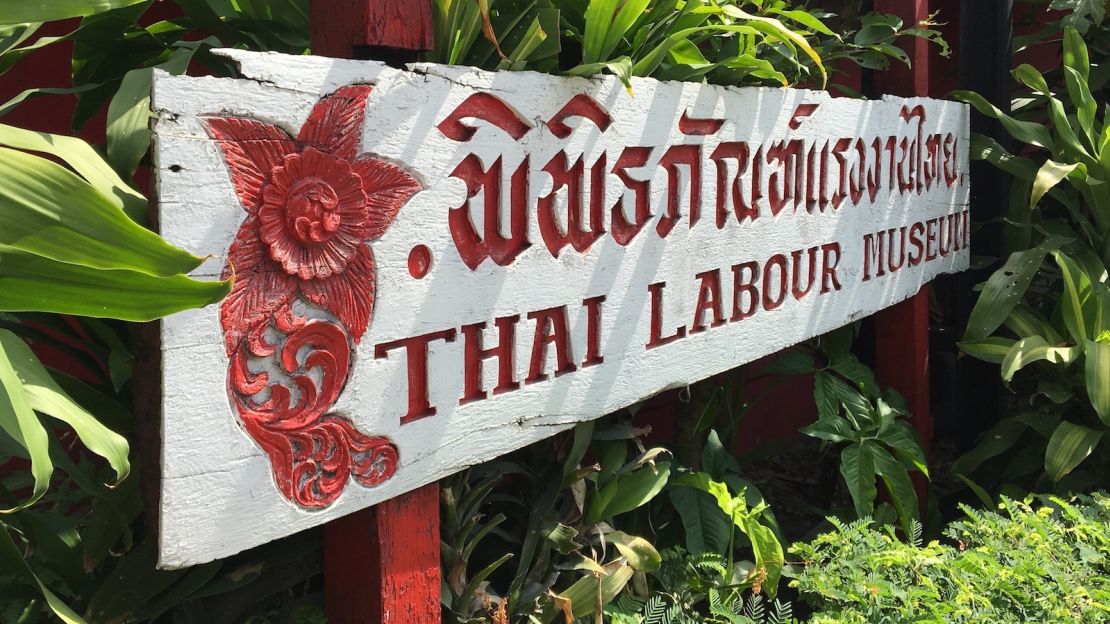The contrast is stark. You’re riding the sleek, elevated rail line into central Bangkok from the city’s main international Suvarnabhumi Airport. Just a few stops from the city’s center, you see old rail stock – engines and cars – scattered through what looks almost like an urban jungle.
As you get closer to the city center, the jungle gives way to old warehouse structures, with Bangkok’s skyline gleaming close by.
This is Makkasan, hardly a prime spot for travelers to the Thai capital. But if you like a bit of the eccentric when you travel, it offers some great rewards.
Below the Airport Rail Link, between its Makkasan and Ratchaprarop stations, you’ll find the State Railway of Thailand’s Makkasan station – separate from the rail link’s station of the same name. Walk along Nikhom Makkasan Road toward the station and transport yourself to what feels like the Thailand of 40 or 50 years ago.
You’ll enter through a market, but it’s nothing like the LED-lit, pulsating night markets that lure tourists across the Thai capital. This place is strictly local. It offers everything: fresh fruits and vegetables, slabs of fresh pork, whole chickens and household items such as plates and detergent.

On a recent Sunday morning, the market was crowded with shoppers, the aroma of Thai food blending with the scent of fresh flowers, the pungent whiff of dried fish and some scooter exhaust to immerse a visitor into the experience.
At the end of the market lies the rail station. It’s all open-air. No fast-food joints, bars, lounges, large flat-screens with timetables. But you can catch a train on the State Railway of Thailand’s Eastern line, which can take you to Pattaya or the Cambodia border, or just a stop back to central Bangkok if you want a quick visit.
And you just might be riding on an antique. Engines and cars used on the line can be as much as 50 years old, though that may not be apparent from their condition.
Here’s where one of Makkasan’s other secrets comes in.
Across the tracks from the station is the expansive main repair yard for the state railway. Those rail cars you saw seemingly being eaten by jungle on the way into Bangkok might one day be taking you to Cambodia.
Where trains are brought back to life
Railway officials recently gave CNN Travel an exclusive tour of the sprawling 186-acre (752,000-square-meter) facility, which is not open to the public.
Away from its main working buildings and stretching into the jungle are rows of train cars. Some are the victims of wrecks and accidents and are mangled beyond repair. They may be scavenged for parts to fix cars that will make their way back onto Thai rails.
Other curiosities are scattered in the woods.
Among the hulks of old train carriages, we’re careful not to step on newly planted mango and banana trees. In other parts, the fruit trees flourish as their branches entwine with old train cars.
There’s also a pair of old Japanese steam engines, once used to provide power to the massive complex.
The Japanese engines date back to World War II, when the Makkasan yard was linked to Japan’s Burma Railway that linked Japanese forces in Thailand to those in what is now Myanmar.
The 258-mile link was also known as the Death Railway, for the tens of thousands of forced civilian laborers and Allied prisoners of war who died during its construction.
That link made Makkasan a target for Allied bombers during World War II, says Kohpong Sutthikorn, engineer of the mechanical department for the facility and a 32-year veteran of the state railway system.
Inside the Makkasan yard’s buildings today, about 1,100 workers are striping down old passenger, dining and sleeping cars and getting them back on the tracks in a continuous restoration process.
In one cavernous 150,000-square-foot (14,000-square-meter) building, dozens of passenger cars are in various states of repair. Some are completely sanded down to bare metal. Others are elevated so that new undercarriages and wheels can be attached. And others still await refurbished doors and interior fixtures.
In another building, workers used massive furnaces and lathes to give refurbished rail wheels the edge that keeps them on the tracks.
Other buildings work on engines, evident by the large diesel blocks sitting outside.
Sutthikorn says of the 1,000 passenger carriages belonging to the Thai railway system, about 15% are out of service for maintenance at any one time. And 20% of the 2,000 cargo cars are routinely under maintenance.
Sutthikorn keeps the results of the yard’s work for last: shiny American-made General Electric and French-made Alstom locomotives that are ready for service, possibly on that line running through Makkasan station.
Thai Labour Museum

If you made it to Makkasan for the railway station – and you’re a bit of a history buff – it’s worth taking an hour to check out the Thai Labor Museum, which is a short walk to the east along Nikhom Makkasan Road.
You won’t get flashy interactives or large IMAX cinema presentations. But you will learn about Thailand’s history of slavery and unpaid labor, how Chinese immigrant workers changed the country, how Japan’s occupation planted the seeds of organized labor in Thailand and how the labor movement fought military governments.
There’s also a somewhat spooky exhibit of items from one of Thailand’s worst workplace tragedies, the 1993 fire at the Kader Toy Factory, which killed 188 workers, mostly women.
The museum is open Wednesday through Sunday, 10 a.m. to 6 p.m., and admission is free.




























